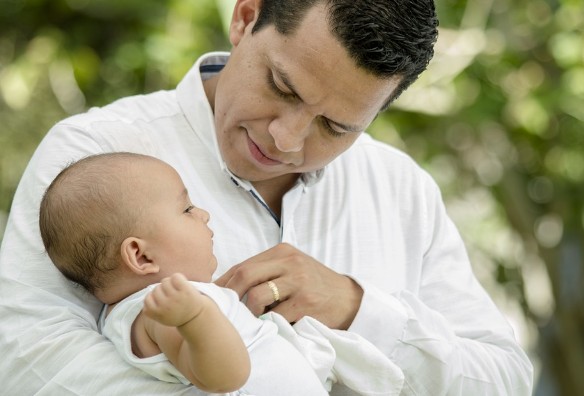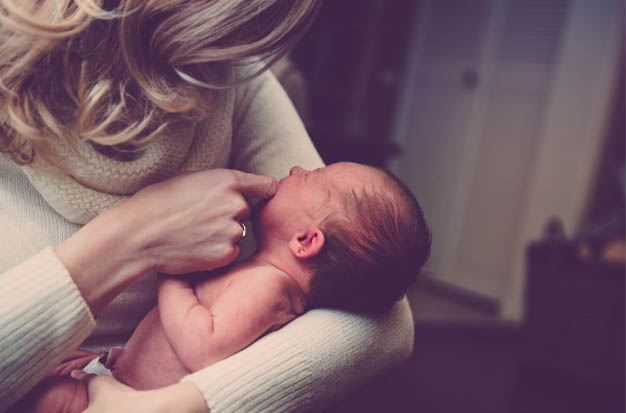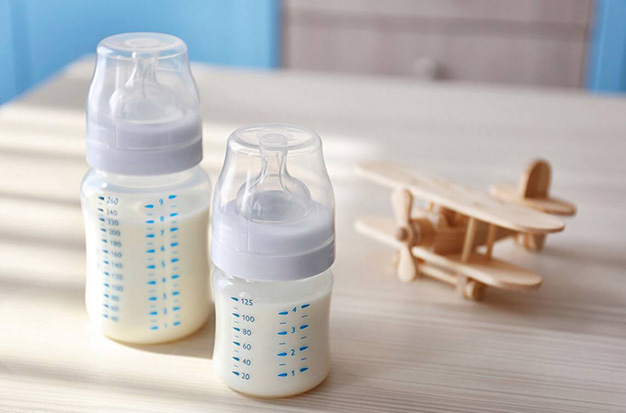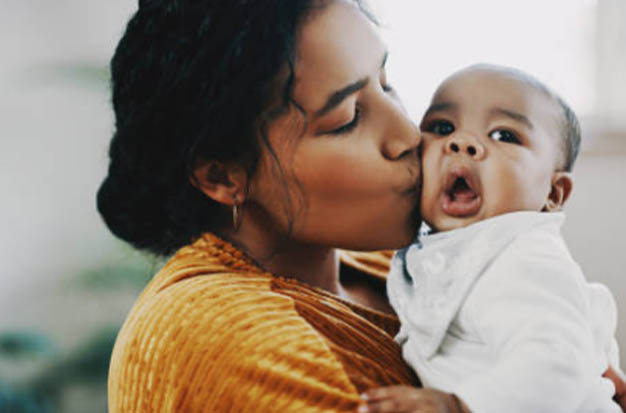Despite the fact that these two issues may seem to be entirely unrelated, the signs and symptoms frequently overlap. For instance, you might assume that when your baby starts pulling on their ear, it’s a surefire sign that they have an ear infection. While this is conceivable, pulling on the ear could also be a sign that your baby is teething. This is because as the tooth erupts, the perforation can result in gum inflammation and the subsequent pain that radiates to the nearby ear.
Teething Can Be Confused With Baby Ear Infections
You might assume that your toddler’s pulling on his ears is a surefire sign that he or she has an ear infection. But if he’s cutting teeth, he might behave similarly because the middle ear is served by nerves that originate in the back teeth, which can make pain seem to originate from the ear.
It’s more likely that he has an ear infection if he has a fever and appears to be most uncomfortable when lying down, according to Dr. Dempsey: Teething is indicated by red, swollen gums. He might push food away, have trouble falling asleep, or cry more than usual. In general, the symptoms of ear infections could also describe a number of illnesses or a child who is simply having a bad day.
But it makes sense to have your pediatrician take a look if your gut tells you that something is wrong, especially if your child has a fever.
Signs Of Teething
These are the most typical teething symptoms, followed by some things you can do to support your teething child.
Gnawing on Everything
Counterpressure eases the uncomfortable pressure of a tooth poking through the gum.
Your baby with teething will therefore be shoving everything it can into its mouth and biting down on it. Watch your fingers, then! It can be shockingly uncomfortable to have a teething baby chew on your fingers.
Drooling
Saliva keeps the gums soft and the mouth lubricated. It also makes it easier for food to be digested. When a baby is teething, the salivary glands go into overdrive, but the mouth muscles are still under your baby’s partial control. Because of this lack of control, all of that dribble escaped.
Teething Rash
The cheeks and chin may chap and chafe from the excess drool. A red, slightly elevated rash with tiny red bumps could appear on your baby. Usually, the chin, cheeks, neck, and/or chest are affected.
For the majority of your child’s teething period, the teething rash may come and go.
Less Interest in Solids
Once your baby has started eating solids, a sudden lack of interest from a previously engaged baby may indicate that their mouth is sore. in particular, if the refusal is irregular.
However, teething babies who have “gone off” solids are generally still interested in breast or bottle feeding.
A Slight Increase in Temperature
When teething, babies don’t get fevers. According to studies, the day before, the day of, and the day following the eruption of a new tooth, there might be a slight increase in temperature. A fever, which is defined as a temperature of 100 degrees Fahrenheit or higher, is not present here, though.
Crankiness
Every baby cries and fusses from time to time. But as time passes, you start to get a sense of what makes them so irritable. If your child appears uninterested in play and appears uneasy for no apparent reason despite being well-rested, fed, dry, and otherwise healthy, it may be because they are teething.
Fever Alert
Don’t assume your baby has teething if they suddenly spike a fever of more than 100 F. To find out if there is any underlying illness causing an elevated temperature in your child, it is best to speak with their doctor or pediatrician.
Rubbing the Face or Tugging an Ear
It can be challenging for anyone to identify the precise location of discomfort. In an effort to relieve their discomfort, babies may rub their face or mouth or pull at their ears when this occurs in combination with their lack of muscle control.
Signs Of An Ear Infection
It’s more likely that some signs or actions indicate an ear infection or another illness.
Fever
When our bodies are battling an infection, we get fevers. There is a fever present in your infant if their temperature is 100 F or higher (4). If a baby under the age of three and a half to six months has a temperature up to 102 degrees Fahrenheit and appears sick, or if the temperature is higher than 102 degrees Fahrenheit without other symptoms, take them to the doctor.
Refusing Food And Milk
Without any other symptoms, a baby who refuses or skips one feeding is probably okay. There may be something else going on if your baby refuses multiple feeds or displays additional symptoms like a cough, runny nose, or upset stomach.
Rashes
It is unlikely that your baby’s rash was brought on by teething if it appears anywhere other than on their face, chin, or upper chest. Put a glass up against the rash if you’re unsure. Call the doctor if it doesn’t go away when you apply pressure.
Vomiting, Diarrhea, Runny Nose, Or Cough
Due to too much saliva in their mouth, teething babies may occasionally cough or guffaw a little. Your baby is most likely sick if they have a runny nose or a cough, are throwing up or having diarrhea, aren’t wetting their diapers, or exhibit any other symptoms.
Inconsolable
Every baby experiences occasional fussy times when nothing you do seems to make a difference. Even though it can be challenging to explain, there are times when you just know that your baby is crying uncontrollably because something is wrong. If you suspect your child is experiencing more than typical irritability, follow your gut and consult a doctor.

If Your Child Has Chronic Ear Infections, See A Specialist
A child is typically referred to an otolaryngologist (ENT) by a pediatrician when he has experienced three infections in the preceding six months or four infections in the preceding 12 months, but this is not a rule.
“Kids who have frequent infections spend a lot of time feeling ill, and if fluid in their ears doesn’t clear between infections it can interfere with hearing and language development,” says the Head of otology at Chicago’s Children’s Memorial Hospital Nancy Young, M.D.
The insertion of a tympanostomy tube (typically in both ears) to lower the risk of infections and enhance hearing will be discussed when an ENT examines your child. Although there is no upper or lower age limit for tubes, children typically receive them between the ages of 1 and 3.
It is the most frequently performed aesthetic surgery on children, involving about 500,000 children annually. A tiny hole is made in the eardrum by the surgeon, who then suctions out the fluid before sealing it with a cylinder the size of a baby’s pinkie nail. You won’t be able to see the tubes once they are in, but they allow air to enter the middle ear and fluid to drain out.
“Ear tubes don’t improve the eustachian-tube function,” says the Chairman of the American Academy of Otolaryngology-Head and Neck Surgery’s pediatric committee Max M. April, MD. “The child’s eustachian tubes should have grown enough by the time they fall out on their own after about a year, which should solve his ear issues.” In a study conducted at the Kaiser Permanente Medical Center in Oakland, California, it was discovered that 90% of parents said their child’s ear issues and general quality of life had improved a year after having a tube placed in their ear.
Treatment For Ear Pulling
Depending on why your child is pulling at his or her ears, you should respond accordingly. To help relieve the cause, you might occasionally need medical care.
If your little one is grabbing or pulling at their ears just because, or scratching their ears so badly that their skin becomes raw or even bleeds, try to help deter the ear obsession. To stop your baby’s fingers from wandering, cover their hands with some tiny mittens or a fresh pair of socks.
By giving your baby other things to do with their hands, such as playing with something loud and colorful, you can also occupy them. Giving your baby new textures to feel, such as a rubbery toy, is also beneficial for their development and may even make them temporarily forget about their ears.
Use a cold pacifier to ease teething discomfort. Ask your baby’s pediatrician if any baby pain relievers are suggested as an alternative. Also, if your child is pulling on their ears and has recently experienced the flu or a cold, or if they exhibit any other symptoms, make an appointment with your pediatrician.
Viruses and bacteria can both infect the baby’s ears. Hearing loss may result from not treating them. A course of antibiotics or other treatment for your baby’s ear infection may be necessary.
Likewise, some babies may experience serious skin rashes like eczema. Although there is no cure, your doctor can provide your baby with the best care to minimize symptoms.
Although it’s not unusual for it to last for several months, baby dandruff or cradle cap typically goes away on its own. Washing your baby’s scalp with warm water and baby shampoo every couple of days can help to loosen scaly patches.
Summary
Even though the symptoms of ear infections and teething frequently overlap, each condition has its own unique set of symptoms. As a result, it is always advised to see your doctor for a checkup rather than self-diagnose if your baby is displaying any of the symptoms mentioned in this article. This will allow your doctor to pinpoint the precise cause of your baby’s discomfort and provide the appropriate treatment.



